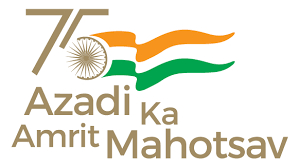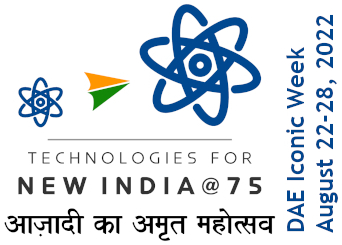J C Bose Memorial Lecture 2018 : Prof. Ramamoorthy Ramesh
Title : Electric Field Control of Magnetism
Date & Time : 5th March, 2018 at 3.00 PM
Venue : SINP Auditorium
He has published extensively on the synthesis and materials physics of complex oxide materials and his work is highly cited (more than 600 papers with over 65,000 citations, H-factor =110). He is a fellow of APS, AAAS & MRS. He has been recognized with a Humboldt Senior Scientist Prize, The American Physical Society’s David Adler Lectureship and the James McGroddy Prize and the TMS Bardeen Prize. In 2014, he was recognized as a Thomson-Reuters Citation Laureate in Physics for his work on multiferroics. From December 2010 to August 2012 he served as the Founding Director of the SunShot Initiative at the U.S. Department of Energy, overseeing and coordinating the R&D activities and funding of the U.S. Solar Program. In 2011, he was elected to the National Academy of Engineering. He is currently the Associate Laboratory Director for Energy Technologies at the Lawrence Berkeley National Laboratory.
Date & Time : 5th March, 2018 at 3.00 PM
Venue : SINP Auditorium
Abstract : Complex perovskite oxides exhibit a rich spectrum of functional responses, including magnetism, ferroelectricity, highly correlated electron behavior, superconductivity, etc. The basic materials physics of such materials provide the ideal playground for interdisciplinary scientific exploration with an eye towards real applications. Over the past decade the oxide community has been exploring the science of such materials as crystals and in thin film form by creating epitaxial heterostructures and nanostructures. Among the large number of materials systems, there exists a small set of materials which exhibit multiple order parameters; these are known as multiferroics, particularly, the coexistence of ferroelectricity and some form of ordered magnetism (typically antiferromagnetism). The community has been able to demonstrate electric field control of both antiferromagnetism and ferromagnetism at room temperature. Current work is focused on ultralow energy (1 attoJoule/operation) electric field manipulation of magnetism as the backbone for the next generation of ultralow power electronics. In this lecture, I will describe our progress to date on this exciting possibility. The lecture will conclude with a summary of where the future research is going.
Profile : Professor Ramesh graduated with a B.S. in Chemistry from Madras University, a B.E. in Metallurgy from Indian Institute of Science and a Ph.D. from the University of California, Berkeley in 1987. He returned to Berkeley in 2004 and is currently the Purnendu Chatterjee Chair Professor in Materials Science and Physics. From 1989-1995, at Bellcore, he initiated research in several key areas of oxide electronics, including ferroelectric nonvolatile memories. His landmark contributions in ferroelectrics came through the recognition that conducting oxide electrodes are the solution to the problem of polarization fatigue, which for 30 years, remained an enigma and unsolved problem. In 1994, in collaboration with S. Jin (Lucent Technologies), he initiated research into manganite thin films and they coined the term, Colossal Magnetoresistive (CMR) Oxides. He initiated pioneering research into multiferroic oxides at Maryland. At Berkeley, he continues to pursue key scientific and technological problems in complex multifunctional oxide thin films, nanostructures and heterostructures. His group demonstrated the existence of a large ferroelectric polarization in multiferroic BiFeO3 films, in agreement with first principle predictions; they also demonstrated electric field control of antiferromagnetism as well as ferromagnetism, a critical step towards the next generation of ultralow power storage and spintronics devices that are completely electric field controlled.He has published extensively on the synthesis and materials physics of complex oxide materials and his work is highly cited (more than 600 papers with over 65,000 citations, H-factor =110). He is a fellow of APS, AAAS & MRS. He has been recognized with a Humboldt Senior Scientist Prize, The American Physical Society’s David Adler Lectureship and the James McGroddy Prize and the TMS Bardeen Prize. In 2014, he was recognized as a Thomson-Reuters Citation Laureate in Physics for his work on multiferroics. From December 2010 to August 2012 he served as the Founding Director of the SunShot Initiative at the U.S. Department of Energy, overseeing and coordinating the R&D activities and funding of the U.S. Solar Program. In 2011, he was elected to the National Academy of Engineering. He is currently the Associate Laboratory Director for Energy Technologies at the Lawrence Berkeley National Laboratory.




